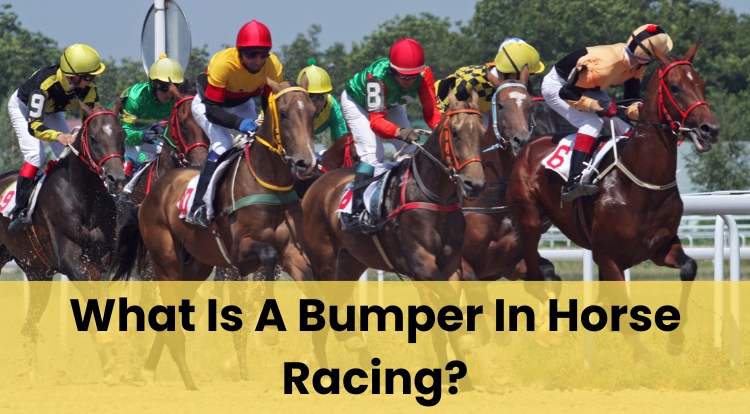
If you're just starting to explore the world of horse racing, you might come across the term "bumper" and wonder what it means.
Whether you're a casual observer, or curious to learn more, understanding these unique events may help enhance your enjoyment of the sport.
Bumpers represent a fascinating aspect of horse racing that can be worth discovering. So, join us as we unravel the mystery surrounding bumpers and explore their place in the racing world.
Why Is a Horse Race Called a Bumper?
The term "bumper" in horse racing has a rather interesting origin. Bumpers, also known as National Hunt Flat Races, are traditionally run without jumps, unlike many other types of National Hunt racing.
The name "bumper" harks back to the days when these races were often run by horses who had yet to tackle obstacles. It provided an opportunity for young, inexperienced horses to gain more racecourse experience.
In earlier times, bumpers were informal events, sometimes featuring horses ridden bareback or with minimal equipment. As these races became more formalised, they retained the name "bumper," although the reasons for the name have been largely forgotten.
Bumpers now form an integral part of the racing calendar, offering horses and trainers a chance to prepare for future challenges. It's a fascinating step for many in the racing journey, providing valuable experience before facing jumps. Understanding bumpers offers a glimpse into the development of racehorses and the traditions of horse racing.
How Many Times Can a Horse Run In a Bumper?
You may be curious about how often a horse is allowed to participate in bumper races. Bumpers serve a specific purpose in a horse’s career, particularly for younger or less experienced horses.
While there isn't a strict limit on the number of times a horse can race in bumpers, trainers typically focus on preparing the horse for races that involve jumps. This transition is an important aspect of their development for future competitions.
The decision on when to move a horse from bumpers to jumping races is usually based on the horse's readiness and what the trainer believes is best for its progress.
While exploring races like bumpers, remember that horse racing, like many sports, involves an element of chance. There are no guarantees of success, adding an element of unpredictability to the sport.
What Are The Rules For Bumpers In National Hunt?
When diving into the world of National Hunt racing, understanding the rules for bumpers can help you appreciate the intricacies of these races.
Bumpers, or National Hunt Flat Races, are distinct in that they are run without the usual jumps seen in other National Hunt races. This makes them an essential part of training for horses that are expected to run over jumps later in their careers.
Typically, these races are open to younger, or green horses, often those who haven't yet competed in races with obstacles. This offers trainers the opportunity to introduce their horses to race conditions without the complexity of jumps.
Bumper races are conducted over various distances, commonly ranging from 1½ to 2½ miles. This range allows horses to experience different levels of endurance and pacing, aiding in their overall development.
The rules are designed to ensure the safety of both riders and horses. Just like larger, more established events, there are regulations around jockey classifications, weights carried, and horse eligibility. Understanding these aspects can provide you with a better grasp of what makes bumpers an important stepping stone within National Hunt racing.
Who Is Eligible For The Champion Bumper?
The Champion Bumper is a prestigious event held during the Cheltenham Festival. It serves as an important race in the National Hunt calendar, focusing on horses poised for future success in jumping events.
To be eligible for the Champion Bumper, horses generally need to be between four and six years old. This provides a platform for younger horses to showcase their potential on a significant stage.
The race is open to horses who have not yet started their jumping career, making it a proving ground for promising newcomers. As such, entries are often carefully considered by trainers aiming to highlight their future stars.
Owners and trainers carefully select participants based on their readiness and potential. The eligibility criteria helps to ensure a competitive field, with many horses going on to achieve greater honours in National Hunt racing.
**The information provided in this blog is intended for educational purposes and should not be construed as betting advice or a guarantee of success. Always gamble responsibly.
